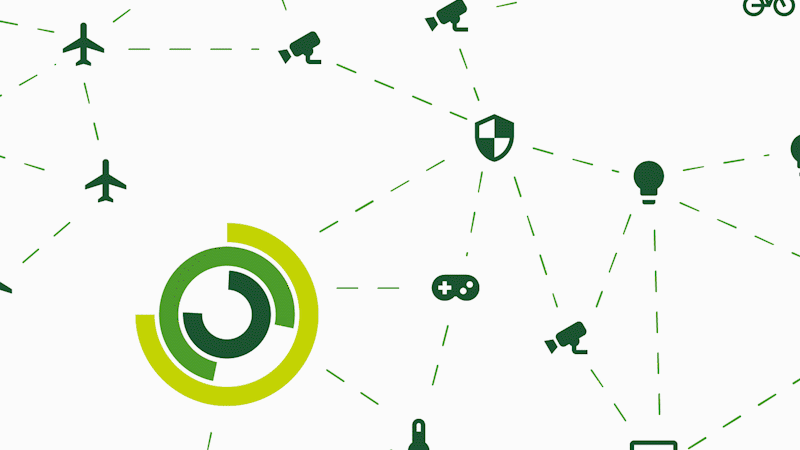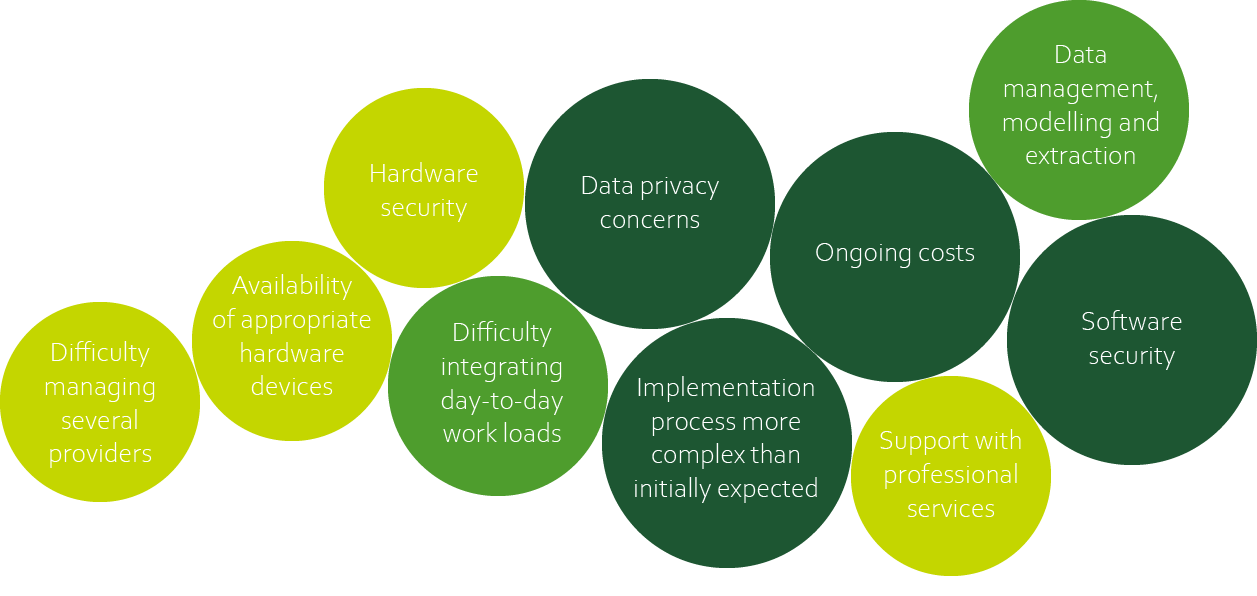
Why is open source IoT important for my business?
Internet of Things (IoT) is not a new concept. Some argue it’s overdue and a broad superficial buzzword. If you are running a business and are still wondering what IoT can bring you and why open source is relevant, read on. This blog gives you a clear view and five ways to get started.
What’s IoT and what’s open source?
The Internet of Things is actually quite a simple concept. It means taking the things in the world and connecting them to the internet (1); blending the physical and digital world. So what value does that have, you might wonder? First let’s split these ‘things’ in four categories: things that gather and share data, things that receive information and act upon information, things that can do both, and, last but not least, us, human beings.
A thermometer is an example of the first category, a light is one of the second, and an (electric) car one of the third. Human beings are the fourth category. They are not only the user and things that can both share and receive information. They are extremely intelligent things as they can process, filter, order, prioritise enormous amounts of data and take decisions. Seeing them as the fourth type, in addition to being the user, will help us with new approaches to IoT projects. More on that later.
The value of the Internet of Things, for professionals that is, is as simple as it’s definition. By connecting the things you have installed at your customers to the internet you can let those things talk to you. That way you can actively monitor them remotely, making your maintenance more efficient. You can also talk back to those devices, creating new services of automated control or live support. Both offer a financial incentive.
What is open source, and why do companies use open source?
What about the ‘open source’ aspect? Without going into license agreements and legal terminology, the true meaning of Open Source is that anyone is free to use the source code, as long as they share whatever they have added to the code under the same conditions.
Why do companies share their code open source? Open Source is first and foremost a cultural mindset. By sharing what you know for free, you trust people to appreciate your work and come back for an expert view and paid support. And vice versa, in your work life you will always look for others who already figured out a similar challenge and are willing to share it freely. Both are two sides of the same coin and create a very open and trustful relation, as there is ‘nothing to hide’.
Why do companies use open source? Open Source means freedom: as a user you are free to use the code and therefore you are in control on what to do with it and who to involve. Professionally it also means you are not tied to the one supplying you the code, preventing an unwanted Vendor lock-in. As you have the source code you are also more flexible to adjust to changing market conditions and extend, change or pivot in any way you want. And if you don’t want to share any new code, you always can pay for a commercial license.
Why is it so hard to start with IoT?
The big problem with IoT is its broad definition and its wide scope. The internet ecosystem has created huge interest and investments in IoT, but the broad scope and technical complexity has had varying results. The vast majority of products and systems can still not be connected. Why would a pool shower or coffee mug even be connected to the Internet? IDC research in 2017 (2), showed that 55% of professionals have undertaken IoT pilots or full deployments. This 55% has revealed many challenges professionals are facing, and beyond that, 45% hasn’t even started with IoT.
Data privacy and Software security
If a professional organisation wants to benefit from IoT, the IDC study shows there are two major challenges professionals are facing with implementing any IoT vision (2). First and foremost there is Data privacy and Software security. With GDPR in Europe, the fear of not properly using personal information has raised awareness for privacy. In addition the big Cloud providers have created a few alarming incidents (let’s not discuss Cambridge Analytics). On software security, the dominant worry is the hosting of company critical information and services on servers your organisation is not in control of, and worse, can not easily step out of once chosen.
Complexity and costs
The second challenge boils down to complexity and costs. Due to the nature of IoT, the technical complexity is a barrier for implementation. However, the impact of IoT on organisational, financial and legal processes makes implementation even more complex than initially expected. To put it simple, a business moves from selling a discrete, physical object at a point of sale for a one time fee, to an intangible continuous service, not hampered by borders. Even when managing all of that, maintaining it can easily turn into high ongoing costs. Many traditional professional organisations shy away as they see extra costs and don’t know how to monetize IoT.

The challenges that professionals encountered with implementing IoT solutions, according to research, conducted by IDC. (2)
5 approaches to start with IoT?
To overcome those challenges we present five approaches for professionals to make starting with IoT less daunting, while limiting the risks and increasing the chances of success.
Start small, start with what you already have
You probably already have many pieces of the puzzle in place without immediately having to invest in expensive infrastructure or new hardware products. You are generating data with the hardware systems of data services you already are deploying for many years. Whether lighting, solar panels, or even showers, in many cases these systems are already including software and even allow for remote connectivity. On the other hand you have a corporate product website, and all of your customers have mobile phones. Start your first business case by making use of these existing sources and you will see that it’s always possible to build a first small case, justified by a relatively small investment. For example, by analysing your existing data in an automated manner and using automated logic to trigger an action, you can create better context specific communication to customers (leading to an extra or better service) or be more efficient in maintenance (managing your suppliers or service organisation).
Gateways, bring offline systems online
Some of your systems might not be accessible remotely but do have an electronic component or a local controller. Adding a gateway, just as a software component, allows you to bring these offline systems online without changing your main product architecture or connecting your installed base.
People as the fourth type of ‘Thing’
Use your customers as advanced sensors. It sounds bold and maybe even like infringing privacy, but many examples have shown that communicating your goals of automation transparently and giving your end-users full control will only raise acceptance levels. It means you can further optimise your service, also for their benefit. Improving feedback options will increase maintenance and support on both ends. As a reference, look at the way social media have been embraced by companies as a communication channel to handle customer complaints. The open communication about your goals and explicit permission and full control by your end-users addresses the core of privacy laws. If you are worried about privacy, you can even design your first services completely anonymous.
New services, 1 + 1 = 3
Any service you create is a continuous flow or links to a continuous flow. Try to translate that flow in an economic value and let that underpin the business case.
An example is a parking manager offering car drivers a parking spot ahead of time, using an IoT solution. It means users can reserve a parking spot which they are willing to pay extra for as they don’t need to drive around looking for a free spot. At the same time the parking manager can reserve a spot without jeopardising the occupancy rate of the parking area.
Another more complex example is a city running it’s EV fleet while at the same time generating solar power at its city buildings. If the city monitors production and takes care to only charge vehicles when generating solar power, they are saving the difference between electricity tariffs and feed-in tariffs. If you wonder how to prevent vehicle batteries from being empty when you need the cars, a fleet manager solution can prevent that. In case of private car owners you can incentivise them offering a discount if they charge later.
Financial modelling from the start
You might have heard of blockchain, one of the trending IoT topics next to IoT and Edge Gateway according to Gartner (3). However, it’s not the technology but the underlying idea of keeping track of small financial transactions which should go alongside the continuous service you are offering. While IoT is advancing and the number of transactions increases exponentially, the transaction value decreases. Traditional centralised banking systems might become too costly to handle these transactions. If you can model your service financially you can also link it to a real or virtual financial value. It sounds more futuristic than it is. Your supermarket has been handing out loyalty points for decades. The difference is that it can be automated with the rise of IoT (4).
We hope you found some hooks to get started with IoT!
More on the importance of IoT and the topics we just briefly touched upon: